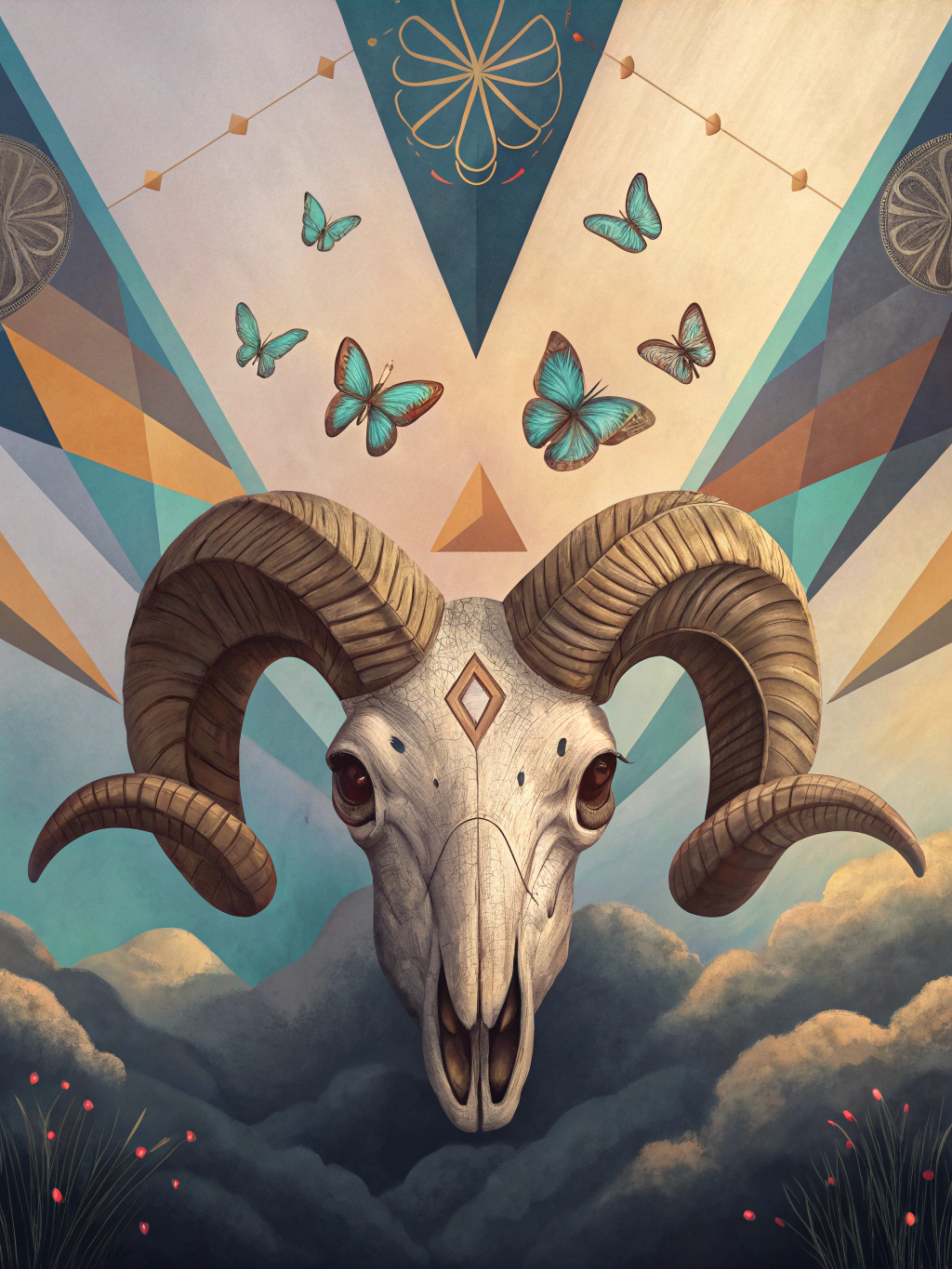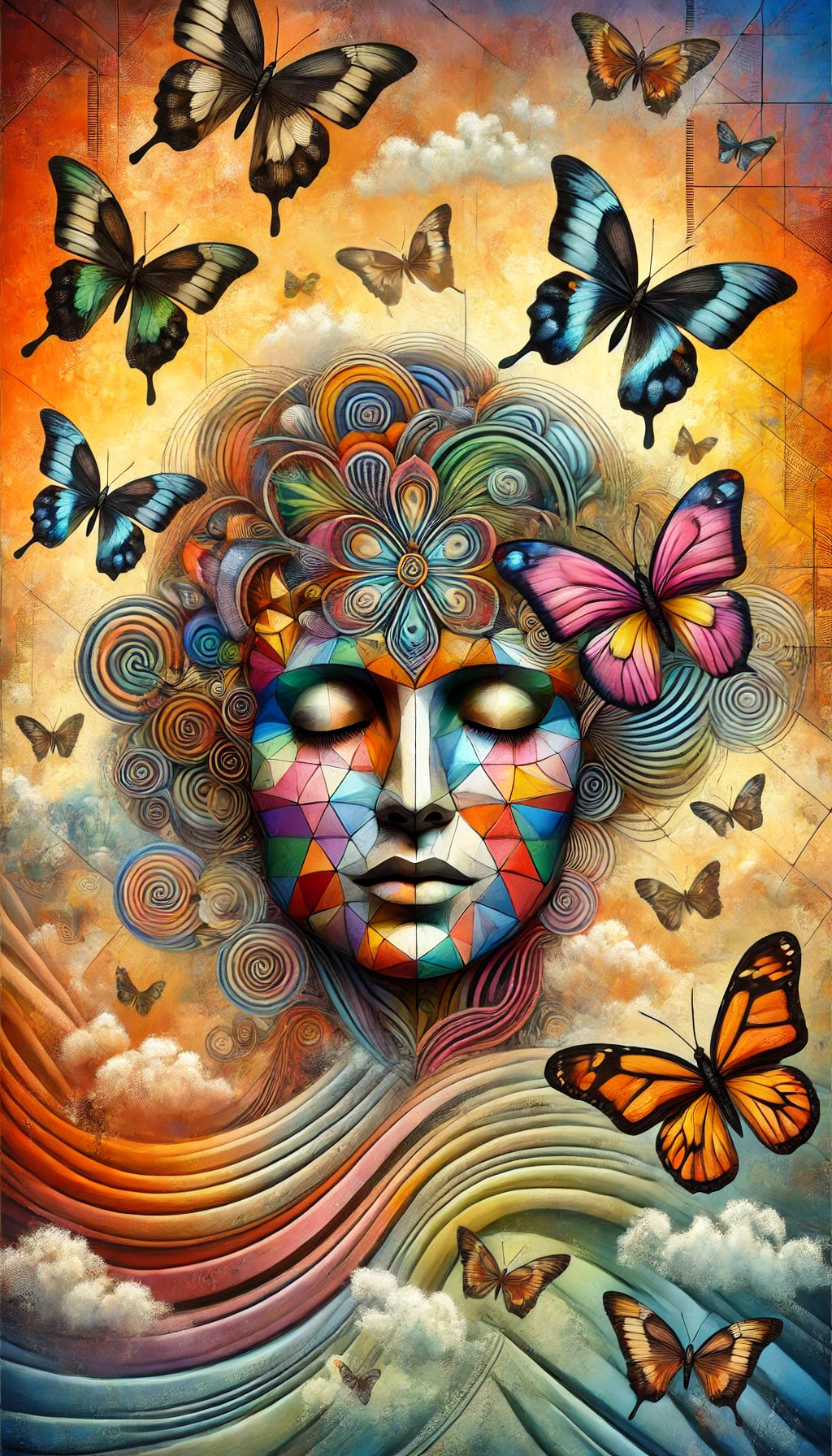Inside the Generative Art Studio – Comparing AI ModelsIntroduction to Generative Models
- Shahab Nn
- Jan 10
- 4 min read
Updated: Apr 16

Generative AI models have distinct characteristics that influence their outputs. Each model brings unique strengths, styles, and limitations, reflecting the algorithms and data shaping them. Artists and researchers use these tools to push the boundaries of creative expression and explore new artistic possibilities. This blog explores five major generative AI models, their features, and their performance when tasked with a surrealist and highly detailed artistic prompt.
The Prompt
The prompt designed for this experiment combined elements of surrealism, detailed textures, and artistic complexity to challenge the AI models:
"Dadaism Art of clouds and butterflies, ram skull mask, (Art Deco aesthetics:1.4), art by Januz Miralles, vibrant colors, detailed face, stunning beauty, detailed skin, skin texture, skin pores, (freckles:0.4), ((colorful geometric gradients background)), abstract geometric gradients bathed in sunlight, a mesmerizing blend of light and shadow. masterpiece, absurdres, intricate details."
This prompt demanded a balance between abstraction and realism, with a focus on blending Dadaist and surrealist themes.
The Models
Stable Diffusion:
Overview: Open-source and highly versatile, Stable Diffusion generates detailed images from textual prompts. It has advanced iterations, like Juggernaut XL, which focus on photorealism and intricate details, making it a popular choice for creating realistic and imaginative visuals.
Strengths: Excellent at rendering fine textures, lighting effects, and complex compositions.
Learn More: Stable Diffusion
Stable Diffusion SD1
SD1.5 ( + Dadaism addon)
Juggernaut XL , SD2
Given its high level of customization and the availability of multiple specialized models, Stable Diffusion allowed me to experiment with several variations, yielding intriguing results. Specifically, when using models trained on Dadaist imagery, the outputs closely aligned with the original ideas and aesthetic of Dadaism compared to other models I tested.
From an artistic perspective, it stayed true to the Dada style, though the overall quality and realism of the outputs were slightly less refined. However, considering that photorealism was not the primary goal of this task, the lack of extreme realism did not detract from its effectiveness.
What stood out was its unlimited flexibility, making it a powerful tool for this type of creative exploration., with advanced versions like Juggernaut XL performing exceptionally well in rendering lighting dynamics and skin details.
Adobe Firefly:
Overview: Built for creative professionals, Firefly emphasizes vibrant, polished outputs and user-friendly controls. It is designed to cater to commercial and creative projects requiring consistency and visual appeal.
Strengths: Known for producing colorful, balanced, and highly stylized artworks.
Learn More: Adobe Firefly
FireFly
Adobe Firefly excelled in generating visually appealing images quickly, with a focus on vibrant and polished outputs. However, it seemed limited in its ability to replicate or heavily lean into specific artistic styles, likely due to Adobe’s commitment to avoiding copyright infringement and legal issues.
These limitations are understandable given Adobe’s stance on ensuring their model operates within ethical and legal boundaries. As a result, Firefly stands out as a reliable choice for projects where adherence to ethical considerations and copyright concerns is a priority.
While its restrictions may not make it the first choice for experimental art, its strengths in speed and consistency make it highly suitable for creators prioritizing commercial readiness and ethical integrity. with balanced compositions but may fall short in producing surreal abstraction and nontraditional designs.
DALL-E:
Overview: Developed by OpenAI, DALL-E specializes in generating imaginative and contextually rich images based on detailed prompts. Its ability to blend concepts into cohesive visuals makes it suitable for both abstract and literal designs.
Strengths: Versatile in interpreting prompts and combining elements cohesively.
Learn More: OpenAI DALL-E
DALL- E
My experience with DALL-E was through ChatGPT, which may have limited my access to the latest version of the model. Despite this, it proved to be quite effective for quick and straightforward tasks, making it a convenient option for casual use.
A particularly interesting feature was the ability to upload an image directly to ChatGPT, which then generated artwork based on it. This added functionality made the process seamless and user-friendly.
While it might not deliver the most cutting-edge results compared to other platforms, its accessibility and ease of use make it a strong choice for quick and practical applications. with cohesive integration of surrealist elements but may lack the unpredictability seen in other models.
Flux:
Overview: Focused on abstract and surreal art, Flux is designed to produce dreamlike, avant-garde imagery that challenges conventional artistic norms. It’s experimental and ideal for surrealist or nonsensical themes.
Strengths: Excels at producing imaginative and boundary-pushing designs.
Learn More: Black Forest Flux AI
Flux Pro & Flux on Freepik
Flux performed far better than I initially expected. Its precise handling of lighting and shadow dynamics, along with its ability to simulate various materials, successfully evoked a surrealist atmosphere.
One standout feature was its approach to poses, which seemed to lean more heavily into surrealism compared to other models. This added a unique and immersive quality to its outputs.
Overall, I believe Flux, with its similarity to Stable Diffusion, could be considered a next-generation iteration of that system, offering enhanced capabilities for surreal and abstract art., resonating closely with Dadaist art themes, while possibly struggling with finer details.
Leonardo AI:
Overview: Specializes in blending fine art with surreal and experimental aesthetics. Leonardo AI is often chosen for its ability to replicate traditional art styles while introducing abstract, modern elements.
Strengths: Seamlessly merges realism with experimental and surrealistic compositions.
Learn More: Leonardo AI
Leonardo Ai - Normal Model
Leonardo Ai - Portrait Mode
My first attempts with Leonardo AI did not yield accurate results, likely due to the selection of an inappropriate model. However, once I switched to its portrait model, the outcomes were astonishingly realistic, producing some of the most lifelike visuals I have seen.
While some works might reveal their artificial origins under close scrutiny by a trained eye, they are convincingly real to an average viewer. This ability to deceive the eye makes Leonardo AI particularly powerful in creating hyper-realistic imagery.
Its combination of fine detail and realism positions it as an excellent choice for creators looking to achieve photorealistic results with minimal adjustments. that blend realism with abstract and surrealist themes, striking a balance between technical precision and artistic experimentation.
This exploration of generative AI models highlights their versatility and potential in pushing the boundaries of art. Each model brings unique strengths to the table, offering artists and creators powerful tools for realizing their visions in ways that blend tradition and innovation. Let’s see how these models evolve and continue to shape the creative landscape.

















































































































Comments